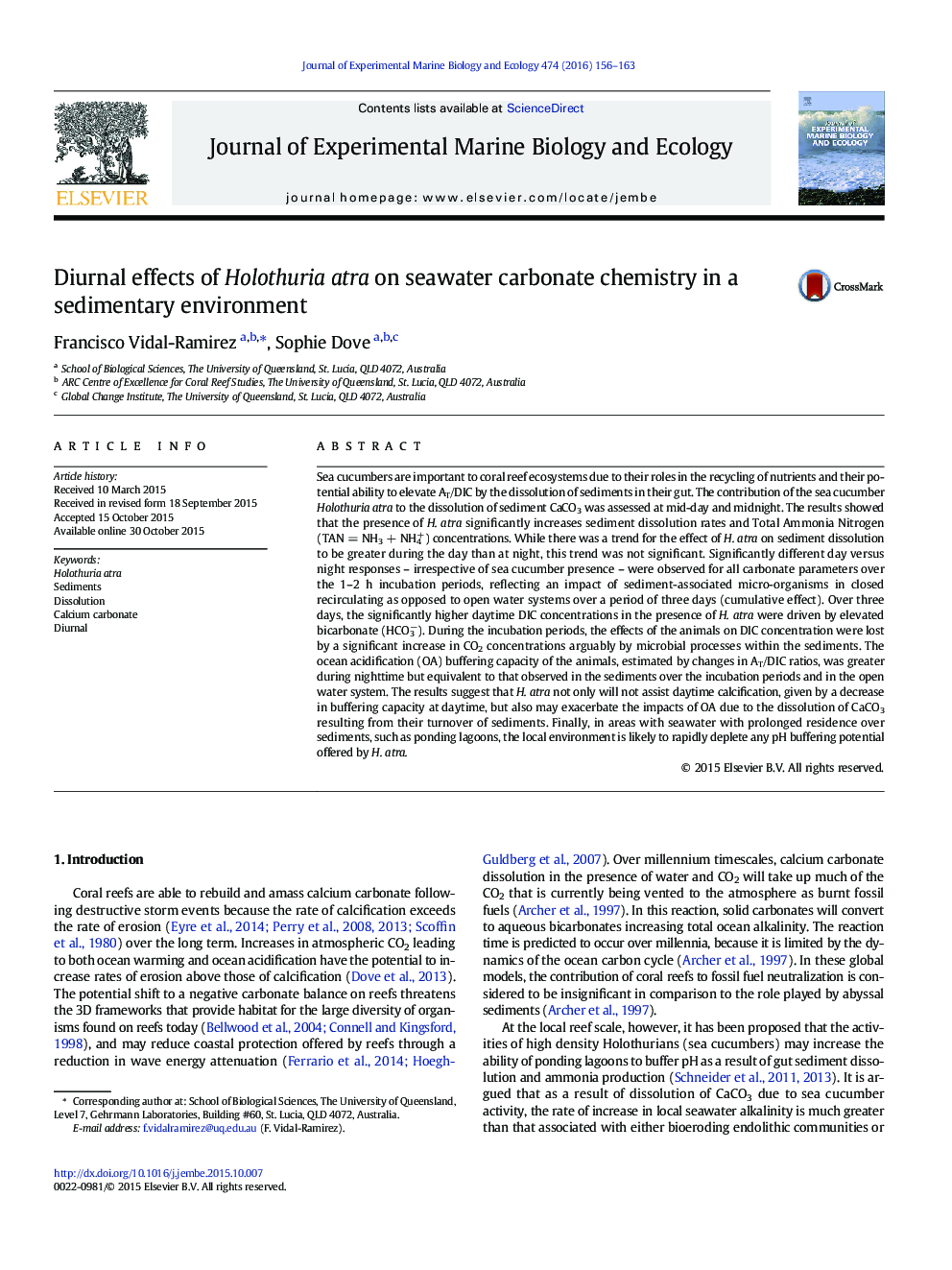| کد مقاله | کد نشریه | سال انتشار | مقاله انگلیسی | نسخه تمام متن |
|---|---|---|---|---|
| 4395316 | 1618401 | 2016 | 8 صفحه PDF | دانلود رایگان |
• H. atra's ability to alter SW chemistry was studied in a sedimentary environment.
• Focus on SW parameters that are linked with improved reef calcification rates
• First inclusion of diurnal variability and other organisms to assess the role of H. atra.
• Sediment microorganisms nullified the effect of H. atra in many carbonate parameters.
• The impact of H. atra may be too small or diluted to influence calcification in reefs.
Sea cucumbers are important to coral reef ecosystems due to their roles in the recycling of nutrients and their potential ability to elevate AT/DIC by the dissolution of sediments in their gut. The contribution of the sea cucumber Holothuria atra to the dissolution of sediment CaCO3 was assessed at mid-day and midnight. The results showed that the presence of H. atra significantly increases sediment dissolution rates and Total Ammonia Nitrogen (TAN = NH3 + NH4+) concentrations. While there was a trend for the effect of H. atra on sediment dissolution to be greater during the day than at night, this trend was not significant. Significantly different day versus night responses – irrespective of sea cucumber presence – were observed for all carbonate parameters over the 1–2 h incubation periods, reflecting an impact of sediment-associated micro-organisms in closed recirculating as opposed to open water systems over a period of three days (cumulative effect). Over three days, the significantly higher daytime DIC concentrations in the presence of H. atra were driven by elevated bicarbonate (HCO3−). During the incubation periods, the effects of the animals on DIC concentration were lost by a significant increase in CO2 concentrations arguably by microbial processes within the sediments. The ocean acidification (OA) buffering capacity of the animals, estimated by changes in AT/DIC ratios, was greater during nighttime but equivalent to that observed in the sediments over the incubation periods and in the open water system. The results suggest that H. atra not only will not assist daytime calcification, given by a decrease in buffering capacity at daytime, but also may exacerbate the impacts of OA due to the dissolution of CaCO3 resulting from their turnover of sediments. Finally, in areas with seawater with prolonged residence over sediments, such as ponding lagoons, the local environment is likely to rapidly deplete any pH buffering potential offered by H. atra.
Journal: Journal of Experimental Marine Biology and Ecology - Volume 474, January 2016, Pages 156–163
